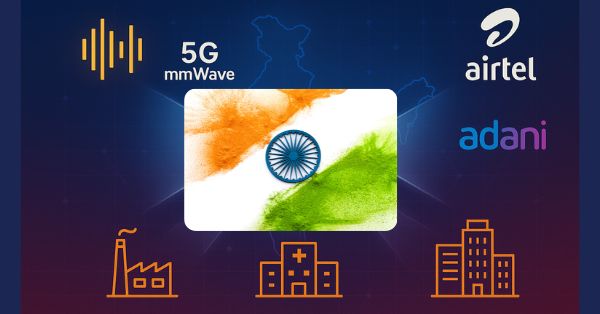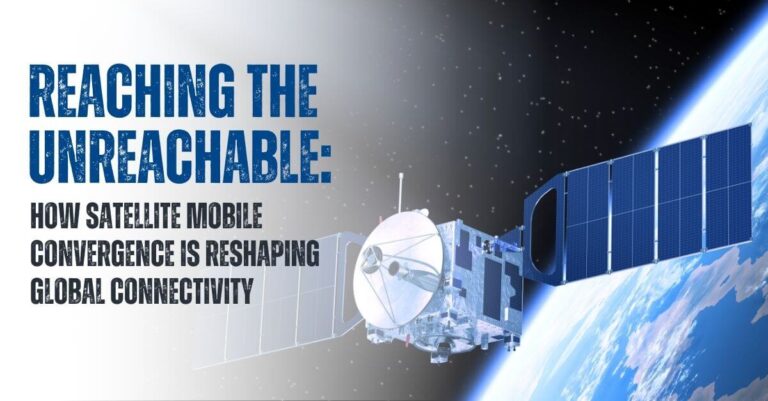Bharti Airtel has announced a key acquisition to further strengthen its 5G footprint in India. The telco and its subsidiary, Bharti Hexacom, will acquire 400 MHz of spectrum in the high-frequency 26 GHz millimeter wave (mmWave) band from Adani Data Networks, a unit of Adani Enterprises. This move not only reinforces Airtel’s network strategy but also signals a broader shift in how spectrum assets are being consolidated in the evolving Indian telecom landscape.
Let’s break down the deal and what it means for Airtel, Adani, and India’s digital future.
Airtel Acquires 400 MHz of 26 GHz Spectrum in Key Indian Markets
The agreement allows Airtel to acquire rights to use 400 MHz of 5G spectrum from ADNL across six key telecom circles:
- 100 MHz each in Gujarat and Mumbai
- 50 MHz each in Andhra Pradesh, Rajasthan, Karnataka, and Tamil Nadu
While the financial terms of the deal have not been disclosed, the agreement is subject to standard regulatory approvals, including conditions outlined in India’s spectrum trading guidelines.
This acquisition will enhance Airtel’s capabilities in deploying ultra-fast, high-capacity 5G networks across urban and enterprise-heavy regions.
How Airtel’s 400 MHz Acquisition in 26 GHz Fuels Ultra-Fast 5G
The 26 GHz band falls under the mmWave category, which is crucial for delivering extremely high-speed, low-latency 5G services. It is especially effective for:
- Fixed Wireless Access (FWA): Enabling broadband-like speeds without physical fiber.
- Enterprise Connectivity: Serving factories, hospitals, and campuses with dedicated high-bandwidth use.
- Dense Urban Environments: Handling large volumes of simultaneous connections, ideal for metros like Mumbai.
While high-frequency bands like 26 GHz don’t offer wide coverage, they are perfect for capacity-driven environments where speed and low latency are critical.
Adani’s Strategic Exit Clears Path as Airtel Acquires 400 MHz mmWave Spectrum
Adani Data Networks had acquired the 400 MHz spectrum during India’s first 5G auction in August 2022, investing ₹212 crore for 20-year rights. Unlike traditional telcos, Adani never intended to enter the consumer mobility space. Instead, the plan was to use the spectrum for private 5G networks supporting its own businesses—ports, airports, logistics, and power.
In October 2022, ADNL was granted a Unified Licence for Access Services, allowing it to operate full-fledged telecom services across India. However, the company did not roll out commercial services and faced challenges in finding commercial viability for its mmWave holdings.
Earlier this year, the Department of Telecommunications (DoT) issued multiple notices to Adani for failing to meet Minimum Rollout Obligations (MRO), raising regulatory concerns over spectrum underutilization.
This spectrum trade-off offers Adani a clean exit while allowing Airtel to put the unused spectrum to productive use.
Airtel Acquires 400 MHz: A Step Toward Optimized 5G Growth Strategy
This isn’t Airtel’s first investment in the 26 GHz band. In the same 2022 spectrum auction, the telco spent ₹43,084 crore to acquire 19,800 MHz of spectrum across several bands, including 26 GHz and the mid-band 3.5 GHz, forming the backbone of its 5G rollout.
As of December 2024, Airtel had over 120 million 5G users out of a total subscriber base of 414 million. With aggressive rollout and targeted spectrum usage, Airtel has been scaling both coverage and capacity.
According to TRAI data, Airtel added 1.65 million new users in January 2025—outpacing Jio, which added 0.68 million—indicating strong market traction.
The addition of 400 MHz in the 26 GHz band enhances Airtel’s ability to:
- Offer differentiated enterprise services
- Strengthen FWA deployments in high-density zones
- Maintain a competitive edge against Jio, especially in strategic circles like Gujarat and Mumbai
What This Means for 5G Use Cases and Monetization
The spectrum acquisition opens up new possibilities for monetizing high-band 5G:
- Fixed Wireless Access (FWA): Offering last-mile broadband in fiber-deficient areas using 5G mmWave.
- Smart Cities and Enterprises: High-frequency bands can power localized private 5G networks for industrial automation.
- Cloud Gaming, AR/VR, and Edge Computing: Supporting latency-sensitive consumer experiences and high-performance workloads.
As telcos look to create new revenue streams beyond connectivity, spectrum like 26 GHz is becoming essential for high-value monetization use cases.
Spectrum Demand Surge: Why This Deal Is Timely
At the ETTelecom 5G Congress 2025, Rahul Vatts, Chief Regulatory Officer at Airtel, highlighted a major concern: India’s telecom industry is expected to need around 2,000 MHz of spectrum by 2030, up from just 400 MHz today.
“There is a humongous need for spectrum going ahead. Some reports show about 30 billion IoT devices, which will also require spectrum,” Vatts said.
This projected demand surge is linked to the expansion of IoT, ultra-reliable low latency communications, and exponential data growth—forecasted to reach 54,000 exabytes by the next decade.
Call for Spectrum Policy Innovation
To meet growing needs, Airtel and Vodafone Idea are urging the government to introduce policy reforms such as:
-
Spectrum Swapping: Allowing telcos to exchange spectrum bands for optimal utilization.
-
Forward Payment Credits: Enabling spectrum payment adjustments if underused bands are surrendered.
-
Long-term Spectrum Roadmap: Ensuring predictability in auctions and allocations to align with national 5G goals.
Despite industry appeals, the Department of Telecommunications has downplayed concerns, claiming that spectrum supply currently exceeds demand. However, telecom leaders stress the need to act now, citing future-use cases that demand a more dynamic and flexible spectrum management model.
Regulatory Landscape: India’s Spectrum Trading Evolution
India’s spectrum trading framework allows telcos to transfer spectrum holdings after a two-year lock-in period. ADNL had acquired the spectrum in August 2022, making this trade legally viable.
The policy, introduced to increase spectrum utilization efficiency, is now proving valuable as newer players like Adani recalibrate their telecom ambitions and incumbents like Airtel double down on their 5G roadmap.
This model ensures that underutilized spectrum can be reallocated to players better positioned to use it, improving national spectrum efficiency.
Looking Ahead: More Consolidation on the Horizon?
Airtel’s move could trigger similar realignments in the future:
-
Other Enterprises: Companies holding spectrum but lacking deployment plans may look to divest.
-
Rising Demand for mmWave: As FWA adoption grows and enterprise 5G scales, demand for high-frequency spectrum may rise.
-
Policy Reforms: The government may further ease trading guidelines or incentivize faster rollout to avoid underutilization.
Conclusion: Strategic Spectrum Buy to Power Airtel’s 5G Edge
Airtel’s acquisition of Adani’s unused 26 GHz spectrum is more than just a bandwidth boost—it’s a strategic bet on mmWave 5G. With applications ranging from high-speed enterprise solutions to fixed wireless, this move positions Airtel to better serve both commercial and consumer segments.
At a time when spectrum efficiency, network quality, and future capacity planning are becoming key differentiators, such deals highlight how telecom strategies are increasingly shaped by smart spectrum plays—not just tower counts or subscriber numbers.






















